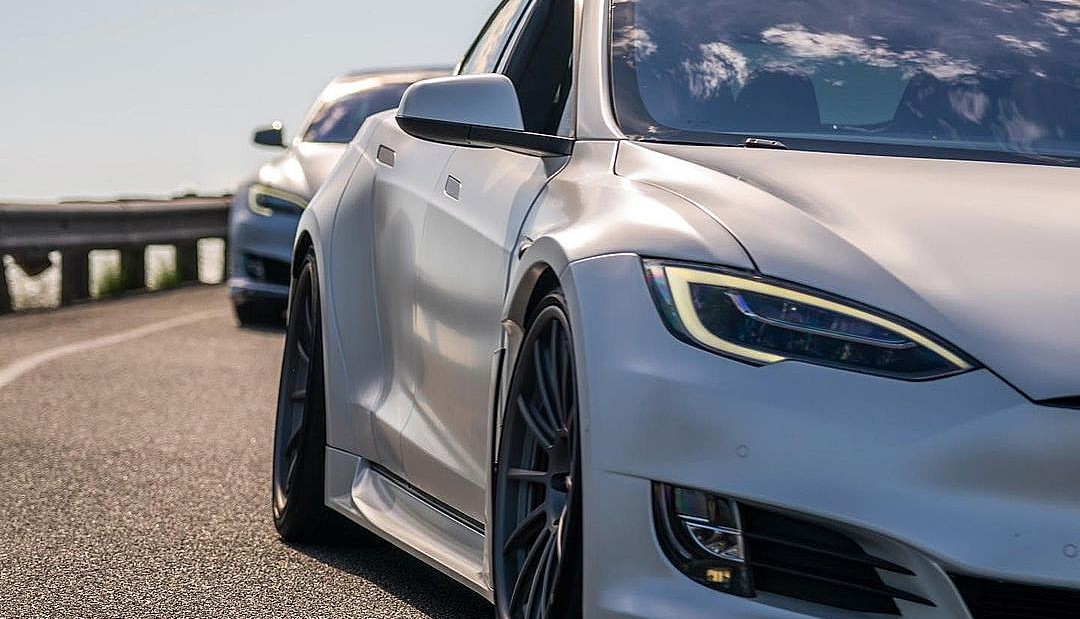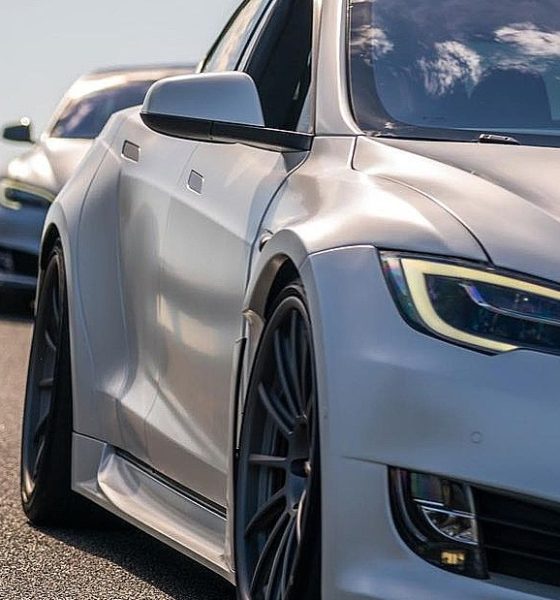Tesla Full Self-Driving (FSD) Beta 10.69.3.1 has been out for some time now, and Teslarati talked to a few beta testers about the update.
Below are some notes and observations about v.10.69.3.1 from Tesla FSD Beta Testers.
FSD Beta 10.69.3.1 and Lanes
Lane selection has been one of the issues that most FSD Beta testers bring up when they talk to Teslarati. Before 10.69.3.1, FSD Beta reportedly had trouble understanding when to switch lanes, which one to switch to, or when to remain in a lane. FSD Beta testers are still experiencing lane selection issues.
“Not only has lane selection in anticipating a turn been a step back for me, lane selection whilst performing dual lane left-hand turns still suffer. The car doesn’t stay in its assigned lane but drifts. This does not happen on right turns,” said Les, a long-time FSD Beta tester.
“Lane selection still has issues. Most of the time it’s ok, but occasionally, it does strange things like changing into the right lane momentarily, then back to the left when there is an upcoming left-hand turn,” noted FSD Beta tester Sandy.
Turn Issues in FSD Beta 10.69.3.1
Les and fellow FSD Beta tester Sandy mentioned other lane issues related to turns. Les noted that one of the biggest step back with FSD Beta 10.69.3.1 occurs when the car faces an upcoming turn.
“On previous builds, the car would only occasionally move in the opposite lane direction of an upcoming turn. On this build, virtually every turn I had upcoming, when the car got within half a mile of said turn, it would signal and move into the lane of the opposite direction,” Les said.
“Virtually every right turn I’ve had upcoming, the car, inexplicably, signals and changes into the left-hand lane. Same for left-hand turns, within half a mile out the car signaled and changed into the right-hand lane. Confounding to say the least, to the point of comedy,” he added.
Sandy noticed that his car requires interventions or disconnects at stop signs sometimes. In the past, other FSD Beta testers have mentioned that their vehicle experiences jerky movements or their signal lights turn off and on during intersections, traffic lights, and stop signs. It’s as if the car is deciding whether the driver wants to turn or not.
“Following and lane changes seem smoother and more natural,” said Sandy. “However, it still has issues that require intervention/disconnects. When it creeps at stop signs, it can make jerky movements with steering wheel and, imo, it creeps to slowly and takes too long before proceeding.”
Mixed Reviews for 10.69.3.1
As with all of Tesla’s FSD Beta updates, there have been a few good reviews and bad ones. Beta testers tend to focus on the issues, as it is their responsibility to report them so Tesla can improve FSD. However, testers also report significant improvements they see during their drives.
In the case of 10.69.3.1, it seems like FSD Beta received mixed reviews. Some testers believed that the update significantly improved the advanced driver assist software while others thought it was a step back.
“I have tested the 10.69.3.1 build on my Model Y, and it’s a giant leap forward from builds prior to 10.69,” observed Tony, a Model Y owner and a member of the FSD Beta program.
Tony noted that the biggest changes were improvements to acceleration, smoother turns, and less necessary steering wheel input. Sandy also observed more improvements with Tesla FSD Beta 10.69.3.1 rather than issues.
On the other hand, Les believed that v.10.69.3.1 was a step back for FSD Beta.
“These 10.69.3.1 step backs are the biggest in my FSD Beta testing experience to date. Previous builds have been much better for me. But again, I understand the process; updates are sometimes “2 steps forward and 1 step back.” I still enjoy testing. The product isn’t finished yet,” he said.
Tesla FSD Beta Wide Release
Tesla started the wide release of FSD Beta v.10.69.3.1 in late November. A day after its release, Tesla rolled out FSD Beta to cars with less than 100 Autopilot miles and Safety Scores lower than 80.
The EV maker rolled out FSD Beta V11 to a few testers already. FSD Beta V11 is Tesla’s single-stack update. However, update 10.69.3.1 seems to be rolling out to more testers.
Tesla also made Full Self-Driving Beta available to anyone in North America who purchases it from their car screen. Now that Tesla has released FSD Beta to anyone in North America interested in trying it out, the company might want to streamline its performance. Based on Teslarati‘s interviews with FSD Beta Testers, the software performs differently based on location, driver, terrain, and other factors.
“Phantom braking on city streets (not highways) returned for me in one bizarre instance; it wasn’t the sudden hard kind of braking, rather this was a new braking behavior that was slow and gradual almost to a stop while I was going straight in the middle lane of a three-lane road. Not at a turn, wasn’t going through an intersection, and the road was clear,” described Les in one instance.
“There were no cars around me so I let the car do its thing to see what it was doing; it literally started slowing from 40mph to 5mph before I disengaged and accelerated back up to speed. Very weird. I went back to that spot a couple days later and the car didn’t do it. It acted normal,” he explained.
Tesla Full Self-Driving has not received regulatory approval yet. It still faces a lot of skepticism, especially in terms of safety. Delivering consistent, reliable performances in various driving situations might help it get regulatory approval.
Are you an FSD Beta tester? Have you tried out V11? If you have, I’d like to hear from you! Contact me at maria@teslarati.com or via Twitter @Writer_01001101.

News
Tesla 2025 Holiday Update: Here’s what it includes, and what it’s missing
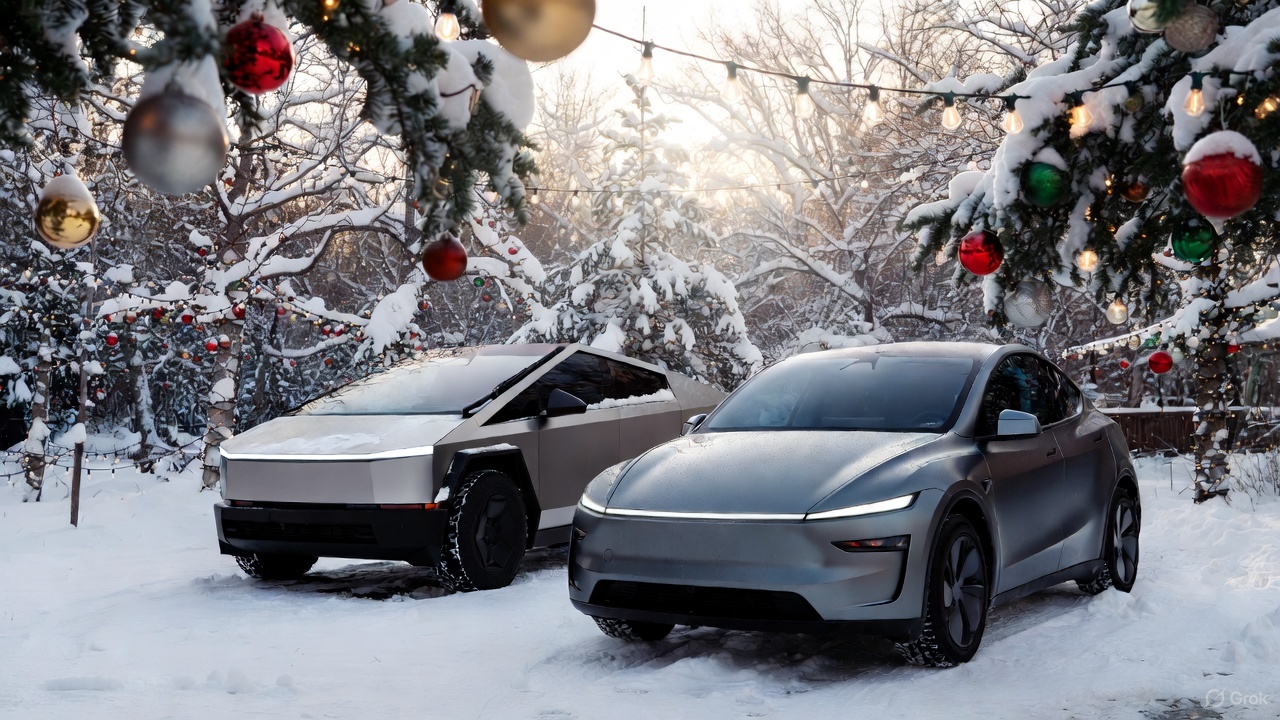
Tesla has finally announced the features for the 2025 Holiday Update, which includes a wide variety of new inclusions that are both functional and just for fun.
The new features are plentiful, but there were a handful of things we were expecting to see based on what we know. We don’t want to sound ungrateful, because there are a lot of great new things on the way with this update.
Here’s what was included:
Grok with Navigation Commands (Beta)
Grok will now have the ability to add and edit navigation destinations, which is a drastic improvement considering Tesla owners had to use their standard voice commands for this in the past.

The utilization of Grok will likely improve the navigation experience by offering some insight into your destination, including reviews and other points of interest nearby.
It will be enabled by using Grok’s “Assistant” personality.
Tesla Photobooth
“Turn your car into a photobooth! Take selfies from inside your Tesla & give yourself a makeover with fun filters, stickers, and emojis. Share with others right from the Tesla app.”
This feature will be available within the Toybox.
Dog Mode Live Activity
When using Dog Mode to keep your four-legged friend comfortable in the car, you’ll now be able to check in on them as it will share periodic snapshots of the cabin, along with live updates on temperature, battery, and climate conditions.
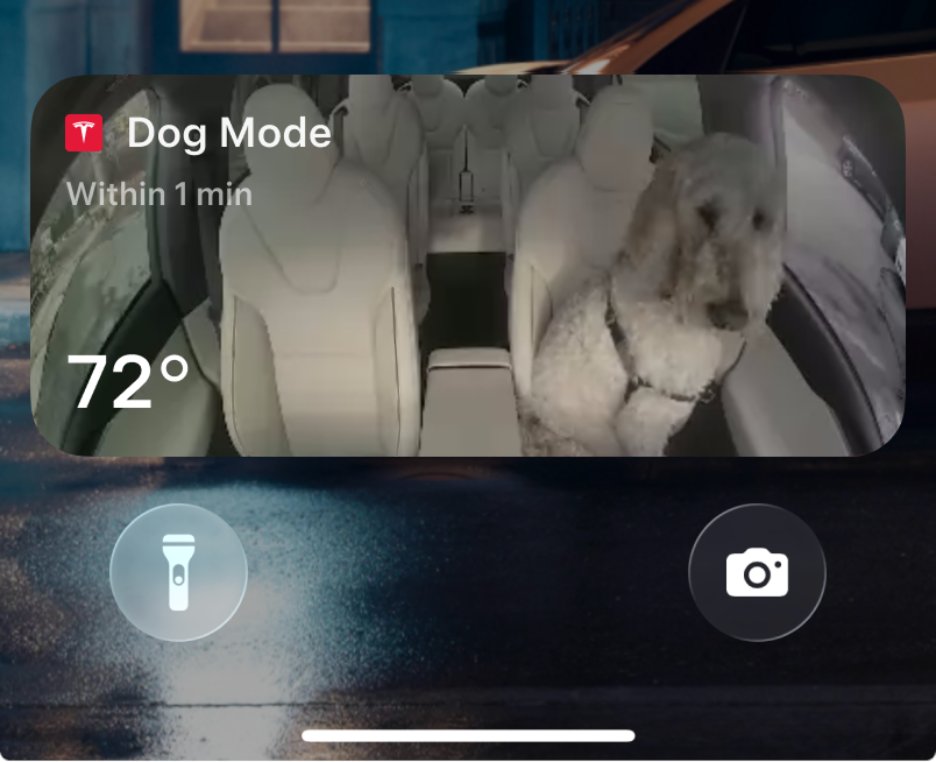
Dashcam Viewer Update
Dashcam clips are awesome, but they’re void of a lot of information, which could be useful in some instances, especially if there is an accident.
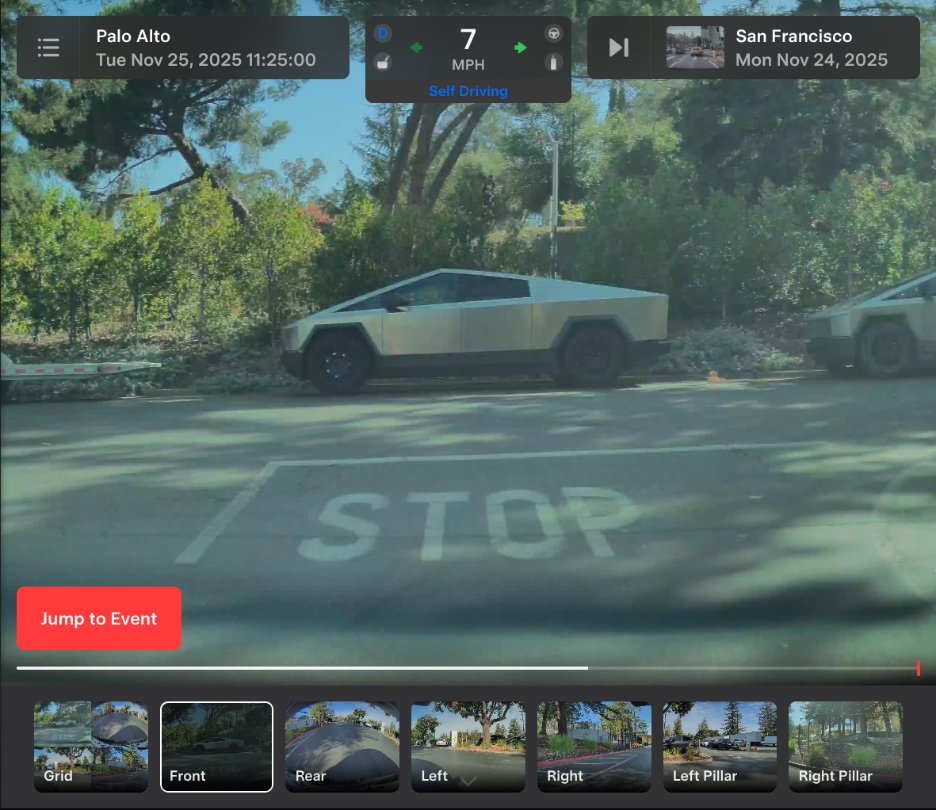
Now, there will be additional details included on each Dashcam clip, like speed, steering wheel angle, and Self-Driving state.
Santa Mode
New graphics, trees, and a lock chime are now available.
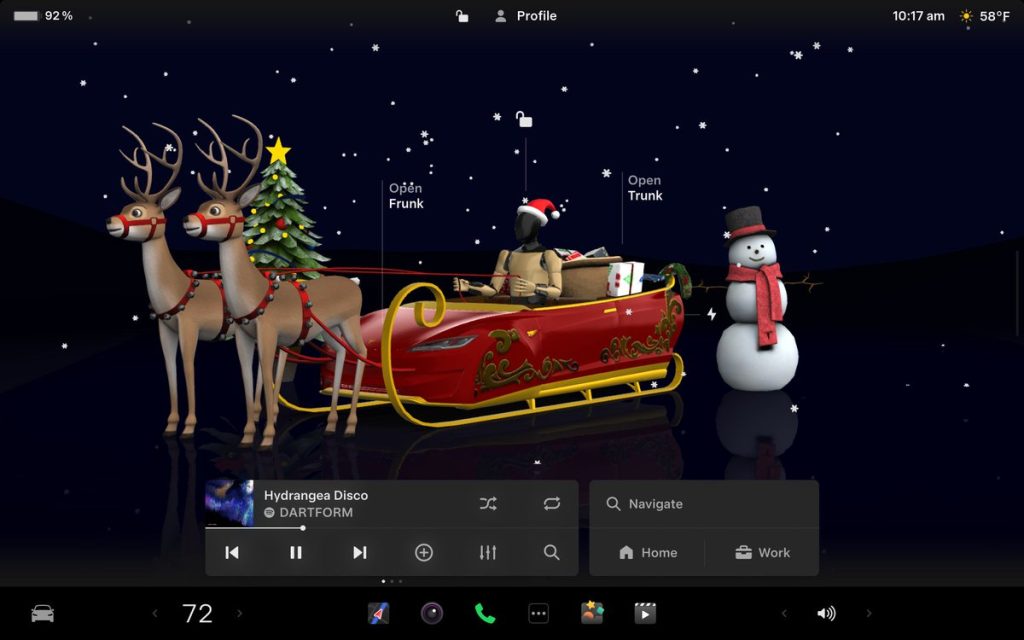
Light Show Update
A new Light Show, called Jingle Rush, will be available.
Custom Wraps and License Plates in Colorizer
Colorizer will now be known as “Paint Shop” in the Toybox. You will now be able to personalize your Tesla Avatar with window tints, custom wraps, and license plates. Preloaded designs will be available, but owners will be able to use their USB Flash Drives to create one that suits their style.
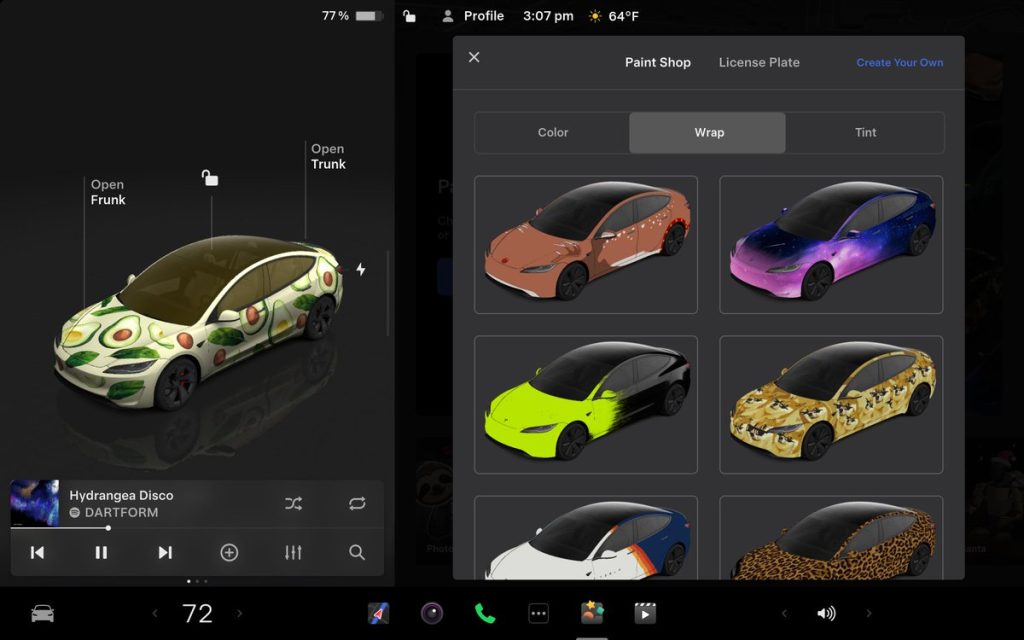
Navigation Improvements
Changing the order of your destinations will be easier through a new “Favorites” tab, and Home and Work can now be set by dropping a pin.
There will also be “Suggested Destinations,” which will be determined through recent trips and habits while parked.
Supercharger Site Map
Perhaps the most significant feature of the Holiday Update, Tesla is adding a 3D view of select Tesla Superchargers by tapping “View Site Map.”
When navigating to a location with this capability, the site layout, live occupancy, and nearby amenities will be available. Drivers will also be able to choose which stall to Supercharge.
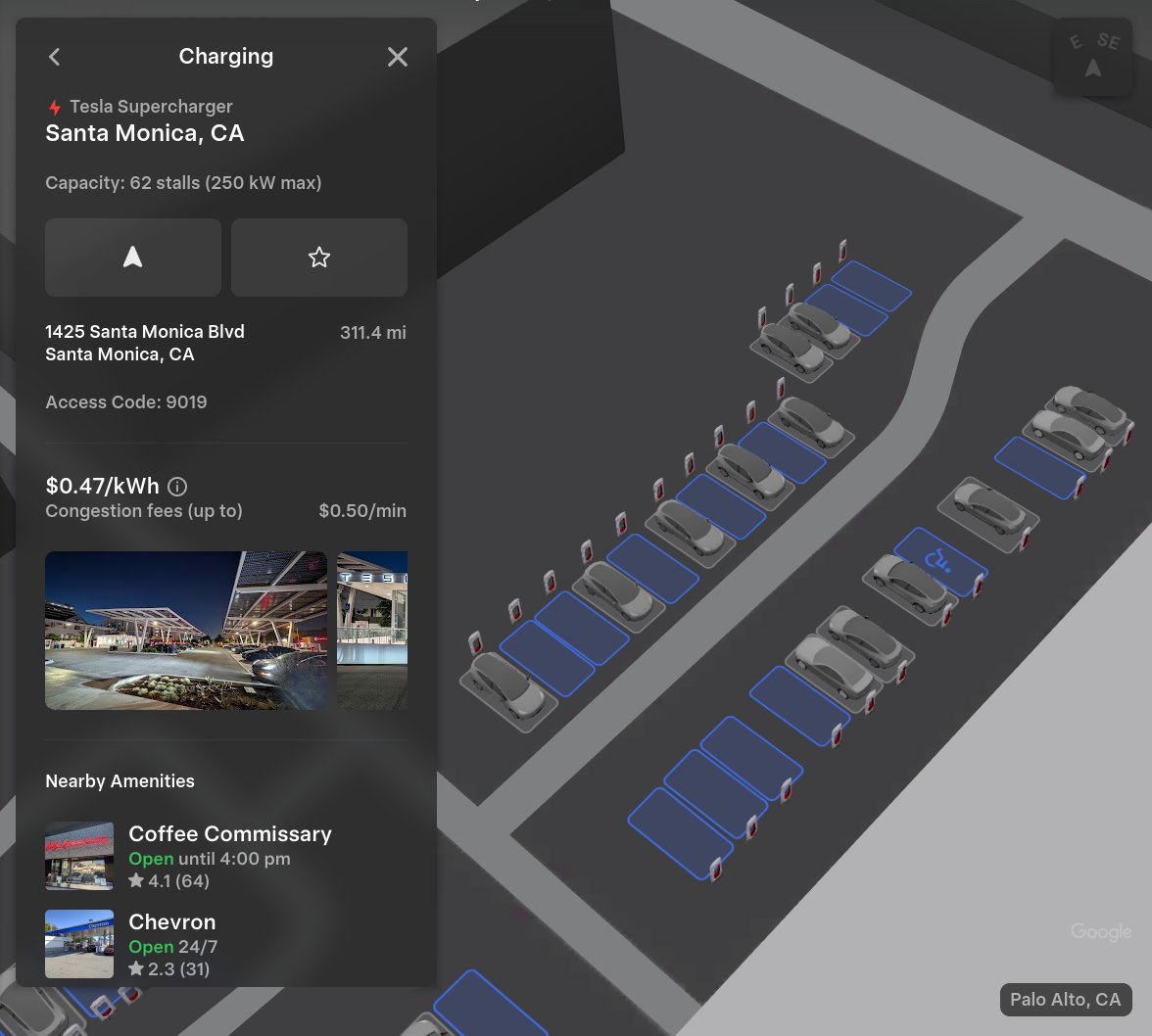
This is only available at a handful of locations currently, but it will expand to more Superchargers as it becomes more robust.
Automatic Carpool Lane Routing
Navigation will include an option to utilize carpool lanes. Your route will automatically choose the carpool lane when eligible.
Phone Left Behind Chime
If the in-car occupant detection system does not see anyone in the car and there is a phone key, or if a phone is left inside the cabin, your Tesla will chime a few seconds after the doors close.
Charge Limit Per Location
You can now save a charge limit for the current location while parked and it will be applied automatically the next time you charge there.
ISS Docking Simulator
In a SpaceX collaboration, Tesla has added this game to its in-car Arcade:
“Become an astronaut and prove your skills by docking with the International Space Station. Control & guide the rocket in this 3D docking simulator game using a set of controls based on actual interfaces used by NASA astronauts.”
Additional Improvements
-
Enable or disable wireless phone charging pads in Controls > Charging (S3XY) or Controls > Outlets & Mods (Cybertruck)
-
Add Spotify tracks to your queue right from the search screen & scroll through large Spotify playlists, albums, podcasts, audiobooks & your library seamlessly, without paging
-
Take the vibes up another level with rainbow colors during Rave Cave. Accent lights color will change along with the beats of your music. App Launcher > Toybox > Light Sync
-
Lock Sound now includes Light Cycle from Tron Mode. Toybox > Boombox > Lock Sound
What’s Missing
There are a handful of features we expected to see with the Holiday Update, but were not included.
Banish Feature
Tesla has been teasing the Banish functionality for quite a few years, but evidently, it is not quite there yet.
Banish will allow owners to get out of their vehicle at the entrance of their destination, and the car will go find a spot and park itself. Some refer to it as “Reverse Summon.”
Apple CarPlay
With all of the rumors regarding Apple CarPlay and then the evidence that Tesla was working to bring CarPlay to vehicles, we really expected it to come with the Holiday Update.
We’re not upset it’s not here, though. Tesla’s in-car UI is significantly better, at least in our opinion.
Parking Spot Selection
One of the biggest gripes about the new Arrival Features with Full Self-Driving v14 is that choosing a set parking spot is not available. This is especially frustrating for Tesla owners who rent or live in townhouse neighborhoods or apartment complexes with assigned parking.
Tesla seems to be working on this based on the release notes for v14.2, where it said future capabilities would include Parking Spot Selection.
News
Man credits Grok AI with saving his life after ER missed near-ruptured appendix
The AI flagged some of the man’s symptoms and urged him to return to the ER immediately and demand a CT scan.

A 49-year-old man has stated that xAI’s Grok ended up saving his life when the large language model identified a near-ruptured appendix that his first ER visit dismissed as acid reflux.
After being sent home from the ER, the man asked Grok to analyze his symptoms. The AI flagged some of the man’s symptoms and urged him to return immediately and demand a CT scan. The scan confirmed that something far worse than acid reflux was indeed going on.
Grok spotted what a doctor missed
In a post on Reddit, u/Tykjen noted that for 24 hours straight, he had a constant “razor-blade-level” abdominal pain that forced him into a fetal position. He had no fever or visible signs. He went to the ER, where a doctor pressed his soft belly, prescribed acid blockers, and sent him home.
The acid blockers didn’t work, and the man’s pain remained intense. He then decided to open a year-long chat he had with Grok and listed every detail that he was experiencing. The AI responded quickly. “Grok immediately flagged perforated ulcer or atypical appendicitis, told me the exact red-flag pattern I was describing, and basically said “go back right now and ask for a CT,” the man wrote in his post.
He copied Grok’s reasoning, returned to the ER, and insisted on the scan. The CT scan ultimately showed an inflamed appendix on the verge of rupture. Six hours later, the appendix was out. The man said the pain has completely vanished, and he woke up laughing under anesthesia. He was discharged the next day.
How a late-night conversation with Grok got me to demand the CT scan that saved my life from a ruptured appendix (December 2025)
byu/Tykjen ingrok
AI doctors could very well be welcomed
In the replies to his Reddit post, u/Tykjen further explained that he specifically avoided telling doctors that Grok, an AI, suggested he get a CT scan. “I did not tell them on the second visit that Grok recommended the CT scan. I had to lie. I told them my sister who’s a nurse told me to ask for the scan,” the man wrote.
One commenter noted that the use of AI in medicine will likely be welcomed, stating that “If AI could take doctors’ jobs one day, I will be happy. Doctors just don’t care anymore. It’s all a paycheck.” The Redditor replied with, “Sadly yes. That is what it felt like after the first visit. And the following night could have been my last.”
Elon Musk has been very optimistic about the potential of robots like Tesla Optimus in the medical field. Provided that they are able to achieve human-level articulation in their hands, and Tesla is able to bring down their cost through mass manufacturing, the era of AI-powered medical care could very well be closer than expected.
News
Tesla expands Model 3 lineup in Europe with most affordable variant yet
The Model 3 Standard still delivers more than 300 miles of range, potentially making it an attractive option for budget-conscious buyers.

Tesla has introduced a lower-priced Model 3 variant in Europe, expanding the lineup just two months after the vehicle’s U.S. debut. The Model 3 Standard still delivers more than 300 miles (480 km) of range, potentially making it an attractive option for budget-conscious buyers.
Tesla’s pricing strategy
The Model 3 Standard arrives as Tesla contends with declining registrations in several countries across Europe, where sales have not fully offset shifting consumer preferences. Many buyers have turned to options such as Volkswagen’s ID.3 and BYD’s Atto 3, both of which have benefited from aggressive pricing.
By removing select premium finishes and features, Tesla positioned the new Model 3 Standard as an “ultra-low cost of ownership” option of its all-electric sedan. Pricing comes in at €37,970 in Germany, NOK 330,056 in Norway, and SEK 449,990 in Sweden, depending on market. This places the Model 3 Standard well below the “premium” Model 3 trim, which starts at €45,970 in Germany.
Deliveries for the Standard model are expected to begin in the first quarter of 2026, giving Tesla an entry-level foothold in a segment that’s increasingly defined by sub-€40,000 offerings.
Tesla’s affordable vehicle push
The low-cost Model 3 follows October’s launch of a similarly positioned Model Y variant, signaling a broader shift in Tesla’s product strategy. While CEO Elon Musk has moved the company toward AI-driven initiatives such as robotaxis and humanoid robots, lower-priced vehicles remain necessary to support the company’s revenue in the near term.
Reports have indicated that Tesla previously abandoned plans for an all-new $25,000 EV, with the company opting to create cheaper versions of existing platforms instead. Analysts have flagged possible cannibalization of higher-margin models, but the move aims to counter an influx of aggressively priced entrants from China and Europe, many of which sell below $30,000. With the new Model 3 Standard, Tesla is reinforcing its volume strategy in Europe’s increasingly competitive EV landscape.
